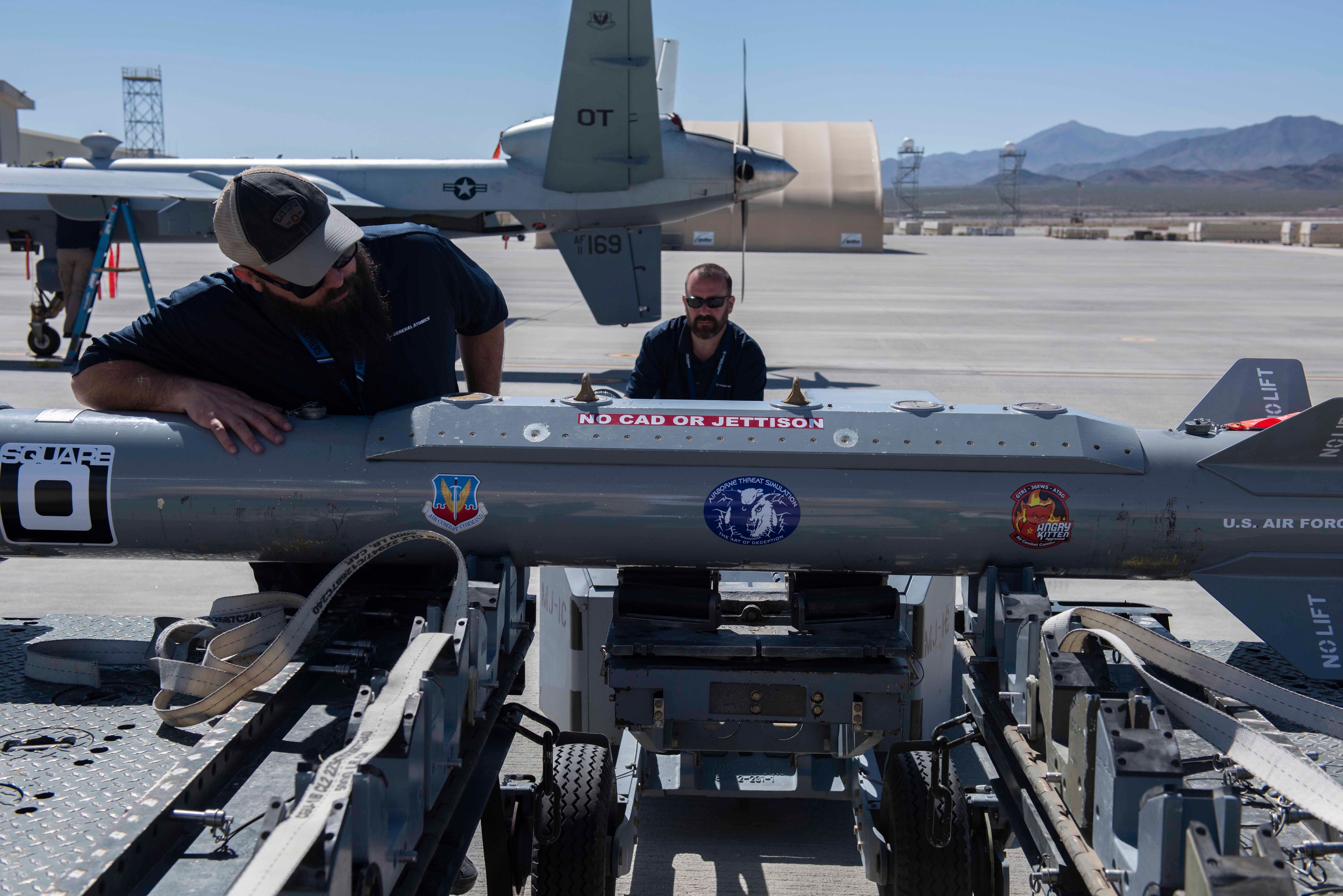WASHINGTON — The U.S. Air Force meshed fearsome with furry in tests of electronic warfare equipment aboard a widely used drone.
The service’s 556th Test and Evaluation Squadron in April completed initial ground and flight testing of an MQ-9A Reaper outfitted with the Angry Kitten ALQ-167 Electronic Countermeasures Pod, a cluster of components contained in a vaguely cat-shaped tube.
The successful trials at Creech Air Force Base, Nevada, focused on providing electronic attack from the Reaper, a General Atomics Aeronautical Systems product typically used to collect intelligence or conduct reconnaissance. The pod is derived from technology developed by the Georgia Tech Research Institute, which in 2013 described the project as using commercial electronics, custom hardware and novel machine-learning for flexibility.
“The goal is to expand the mission sets the MQ-9 can accomplish,” Maj. Aaron Aguilar, the 556th Test and Evaluation Squadron assistant director of operations, said in a statement May 13. “The proliferation and persistence of MQ-9s in theater allows us to fill traditional platform capability gaps that may be present.”
Electronic warfare, or EW, is an invisible fight for control of the electromagnetic spectrum, used to communicate with friendly forces, to identify and suppress opponents, and to guide weapons. Dominance of the spectrum will be critical in a fight with China or Russia, the two most significant national security threats, according to U.S. defense officials.
The Air Force is trying to reinvigorate its EW capabilities after years of neglect; the service in September announced a “sprint” to dig up deficiencies, seek needed resources and identify next steps.
Lt. Col. Michael Chmielewski, the 556th Test and Evaluation Squadron commander, in a statement said electronic attack aboard a Reaper is “compelling.” The Air Force previously used Angry Kitten in training, outfitting aggressor squadrons with the gear to harass trainees and simulate dizzying electronic barrages.
“Fifteen hours of persistent noise integrated with a large force package will affect an adversary, require them to take some form of scalable action to honor it, and gets at the heart of strategic deterrence,” Chmielewski said.
Angry Kitten’s name is a brew of inside joke and design goals, according to a 2013 Newsweek report. It is also a departure from the typical terror-inducing military moniker: Hellfire missile, Predator drone, Stryker combat vehicle.
Roger Dickerson, a senior research engineer with the Sensor and Electromagnetic Applications Laboratory at the Georgia Tech Research Institute, in 2015 told C4ISRNET that although the pod has “an admittedly slightly silly name,” it represents “very serious technology.”
“We’ve been working hard to improve the capabilities and the readiness of the war fighters in our sponsor organizations: the Army, the Navy and especially the U.S. Air Force air combat community,” Dickerson said at the time.
Colin Demarest was a reporter at C4ISRNET, where he covered military networks, cyber and IT. Colin had previously covered the Department of Energy and its National Nuclear Security Administration — namely Cold War cleanup and nuclear weapons development — for a daily newspaper in South Carolina. Colin is also an award-winning photographer.




